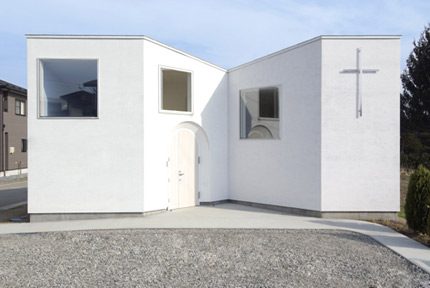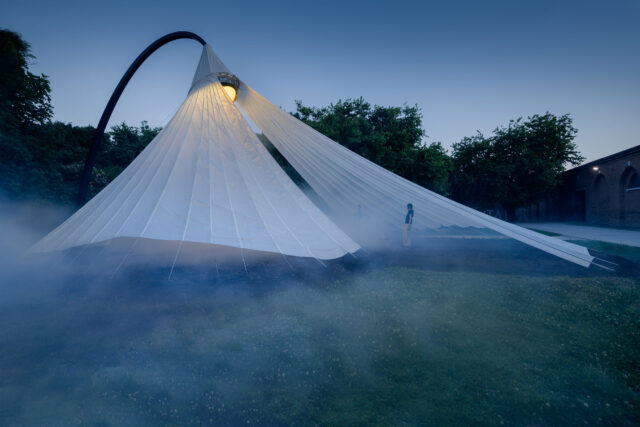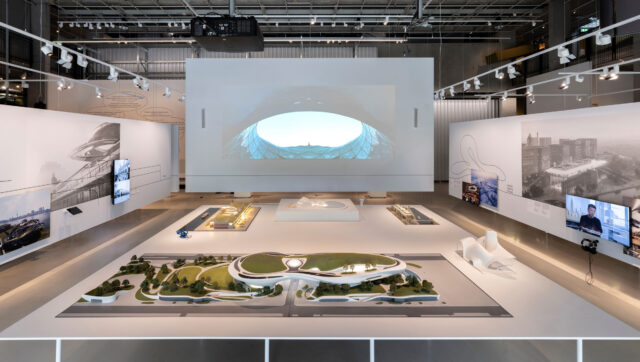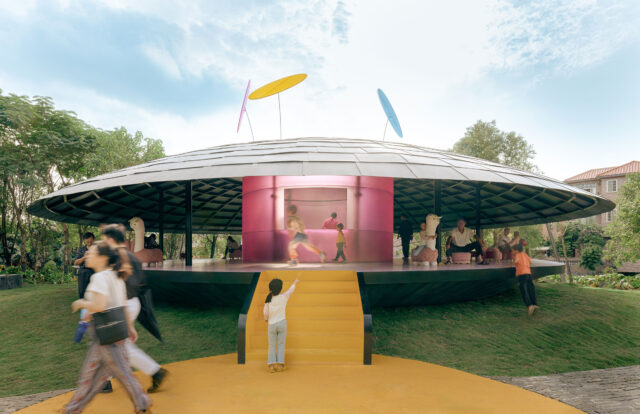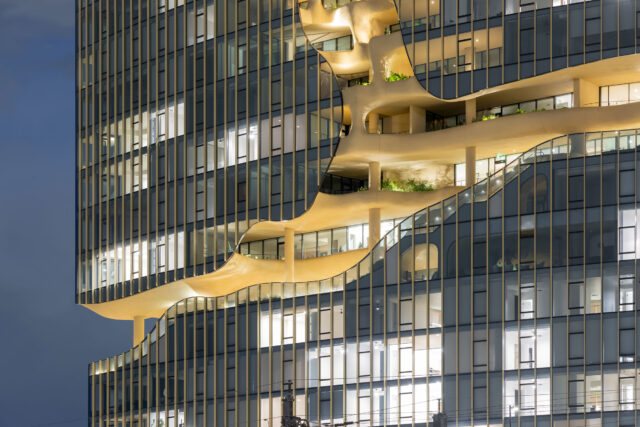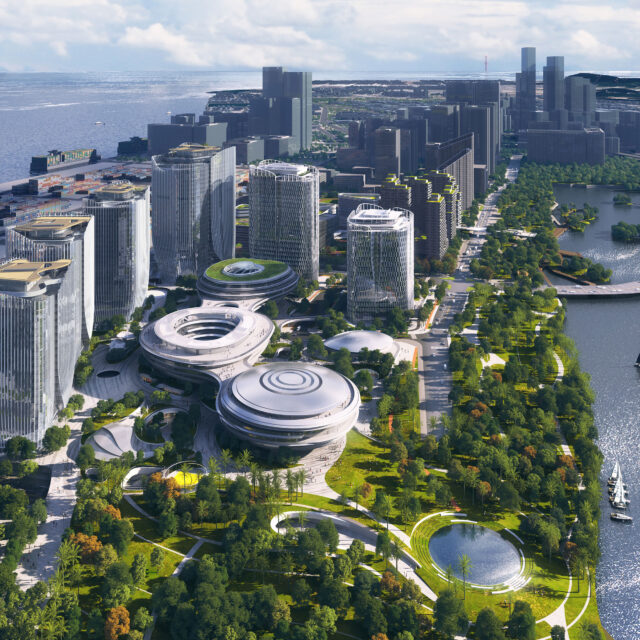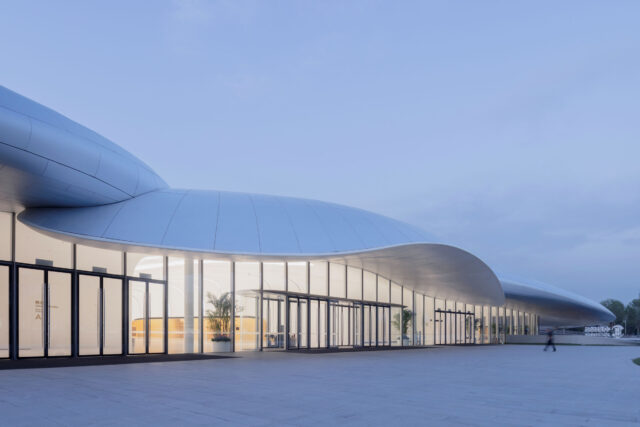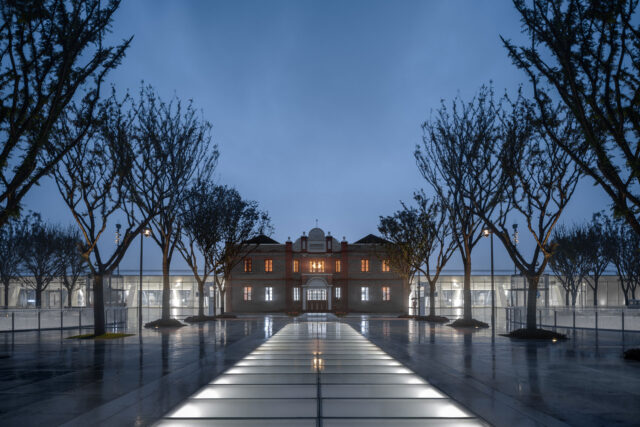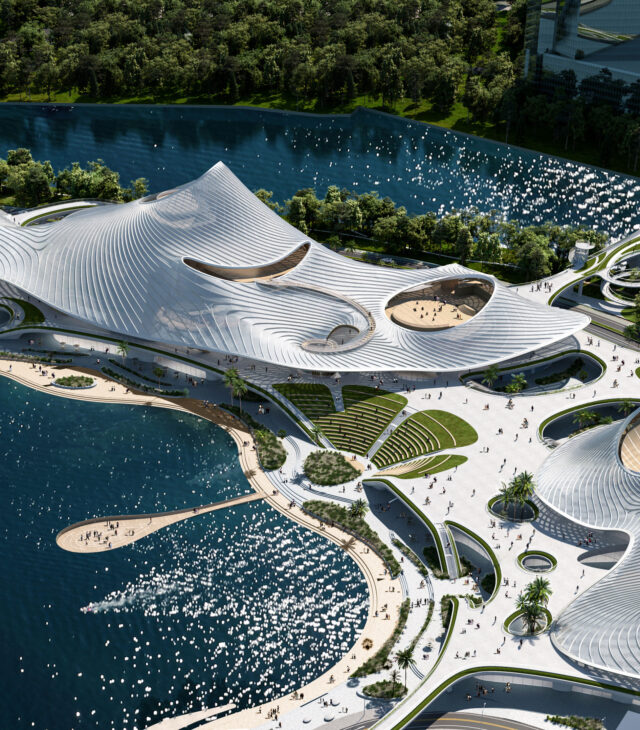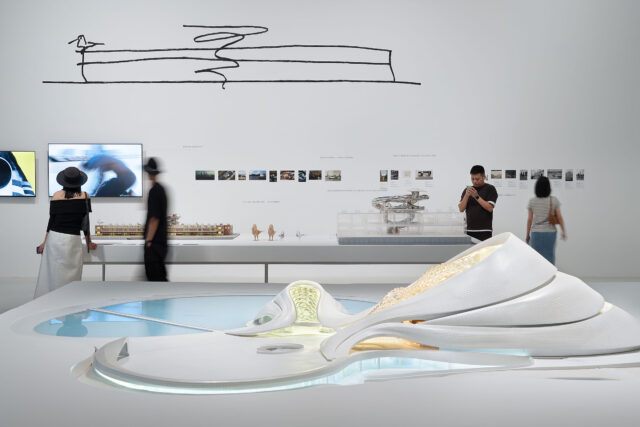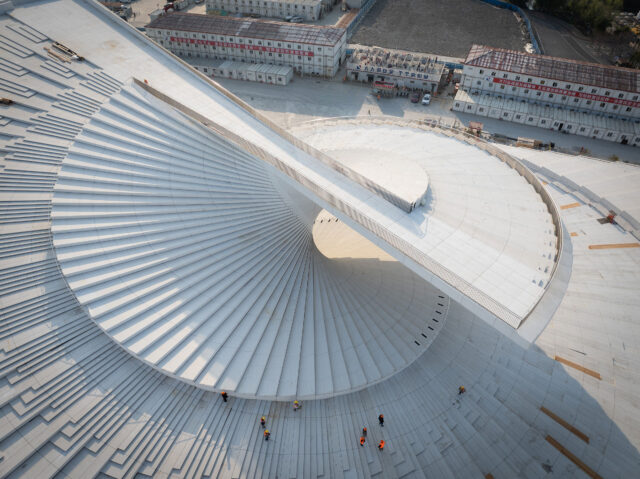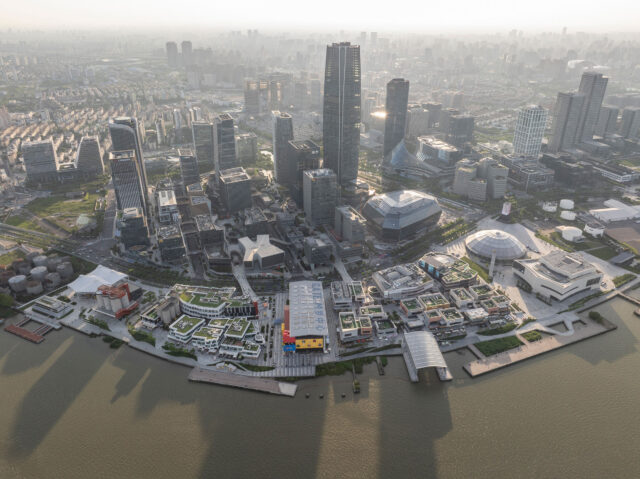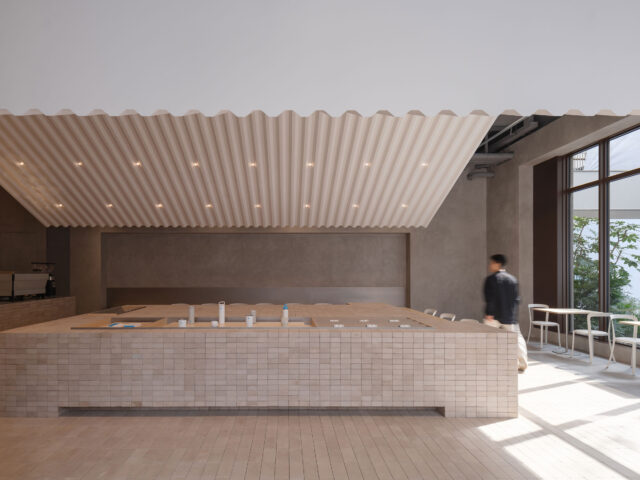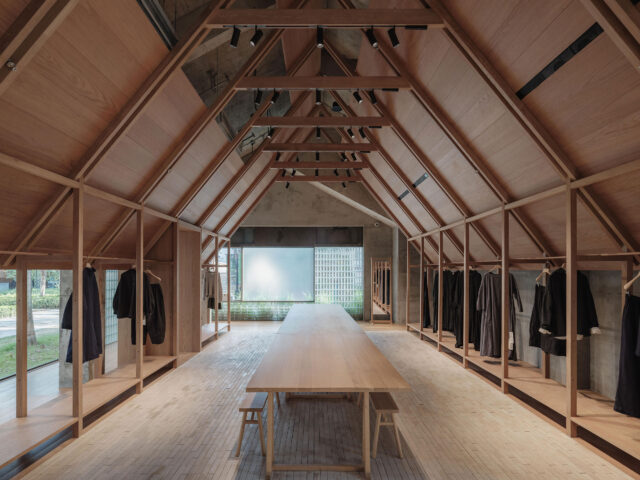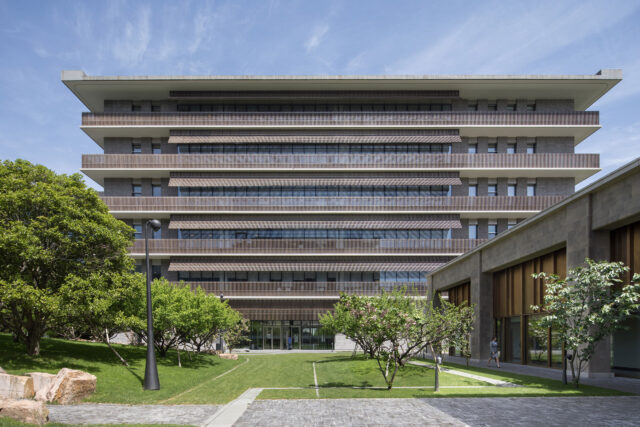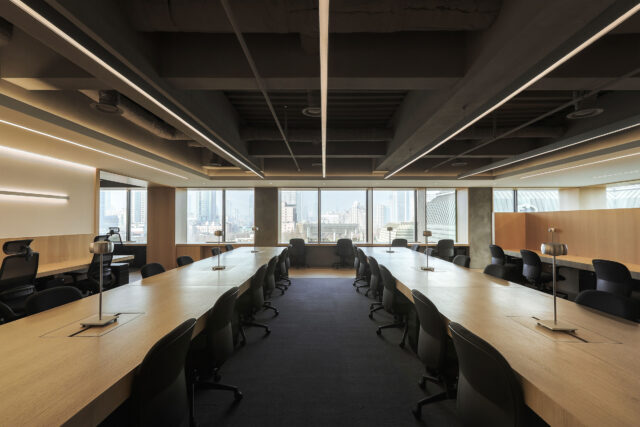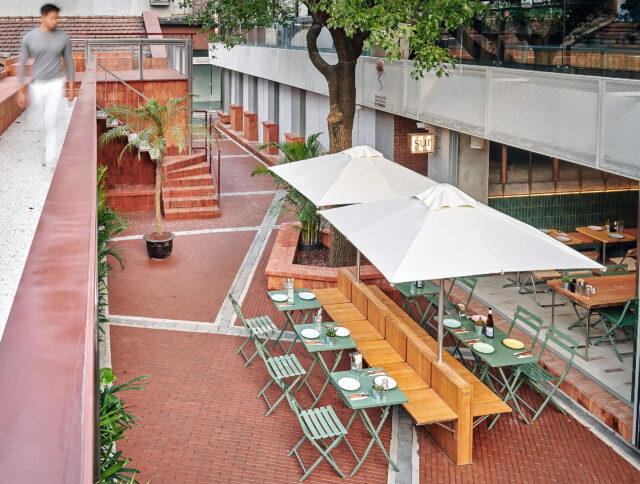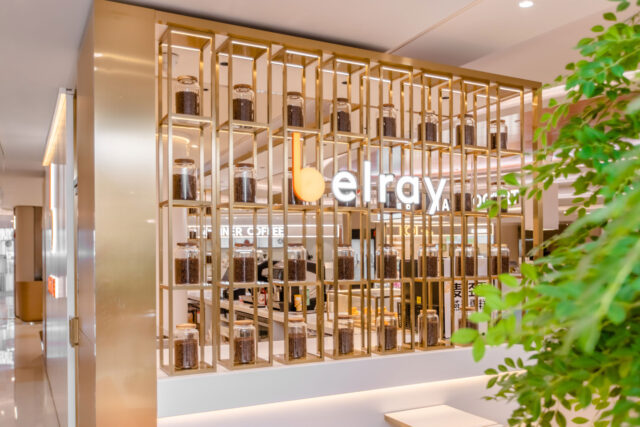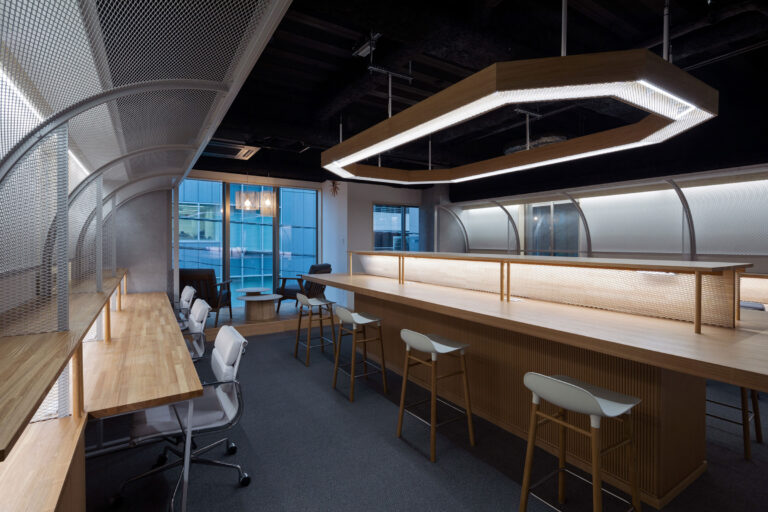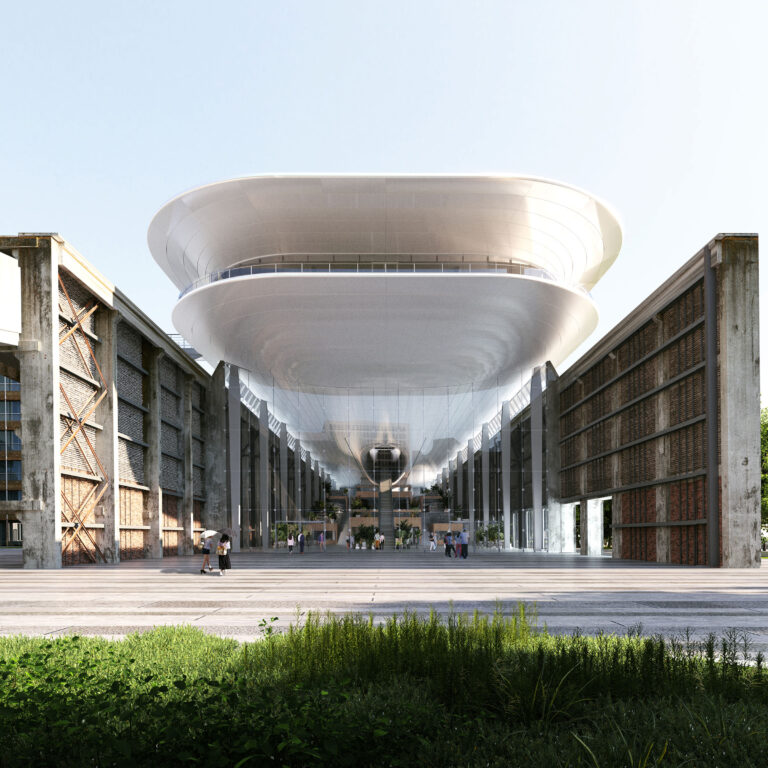
SHARE MADによる、中国・上海の複合施設「The Ark」。70年代竣工の倉庫を複合施設に改修。新旧の構築物が並置される状況を求め、既存の壁の間に“金属製のヴォリューム”が浮遊する構成を考案。都市の記憶を未来に繋げると共に人々の為の新たな交流空間を創り出す



MADによる、中国・上海の「The Ark | Shanghai Cement Factory Warehouse Renovation」です。
70年代竣工の倉庫を複合施設に改修する計画です。建築家は、新旧の構築物が並置される状況を求め、既存の壁の間に“金属製のヴォリューム”が浮遊する構成を考案しました。そして、都市の記憶を未来に繋げると共に人々の為の新たな交流空間を創り出しています。本建築は2026年までの完成を予定しているとの事。
こちらはリリーステキストの翻訳です
The Ark|MADアーキテクツが上海セメント工場倉庫のリノベーションデザインを公開
MADアーキテクツは、上海張江セメント工場倉庫のリノベーションのデザインを公開しました。
改修の対象となったのは、上海張江セメント工場の南側にある「Wanmicang」倉庫です。MADのリノベーションは、新旧の建造物を並置することで、時間と物理的な次元の3次元的な階層を構想しています。上昇する箱舟のような、変貌を遂げた建物は、公園を文化、創造性、商業、シェアオフィスを統合した多機能の公共ウォーターフロント・スペースに変えることで、朽ち果てた工業用地に新たな命を吹き込むでしょう。
上海張江セメント工場は、かつて上海の3大セメント工場のひとつでした。1971年に建設され、2013年に生産を終了するまでの50年間、上海の都市建設の発展を見守ってきました。この倉庫はかつて、加工のためにセメント工場に原料を送る船が最初に立ち寄る場所であり、現存するセメント工場最大の建物でもあります。その川沿いのファサードは、まるで広大な絵巻物のようで、上海の人々の何世代にもわたる都市の記憶となっています。
近年、国内外の先駆的な建築家たちが、「1万メートルサイロ」、「セメントサイロ」、「窯尾塔」などの歴史的な産業建築物を継続的な再利用を通じて保存するために公園群の設計を依頼されています。歴史的な工業用建物をリニューアルして再利用し、研究開発、文化とスポーツサービス、創造的な商業支援のための施設を開発することで、セメント工場はさまざまな種類のビジネスとダイナミックな建築空間を備えた複合キャンパスに生まれ変わります。
MADアーキテクツの創立パートナーのマー・ヤンソンは言います。
「産業遺産が保存され、活用されるのは、それが歴史的な記憶を携えているからというだけでなく、より重要なのは、それが未来に歴史を感じさせるからです。だから、私たちはここで工業的な美学を賛美し強化する必要はなく、むしろ現代と未来の精神に焦点を当てるべきなのです」
この改修は、古い屋根を箱舟のような金属製の「浮かぶ」ヴォリュームに置き換えることで、倉庫の元の工業建築的な外観を保存します。古いコンクリートの荒々しさと新しい金属の滑らかさのコントラストは、老朽化した工場建物に新たな命を与え、元々の工業スペースは多機能な都市のリビングルームへと生まれ変わります。オリジナルの工業用建物の長い斑模様のファサードは補修・補強され、新しい空間の記憶と魂の一部となります。張江副都心に面する西側の壁は撤去され、全面吊り下げ式のガラスカーテンウォールに変更されます。これは元の壁から後退して設置され、外側に24時間利用可能な都市公共空間を創出します。
明るく開放的な工場スペースは、透明なガラスカーテンウォールの向こうから見えます。このデザインは、細長く背の高い倉庫の容積を生かし、奥行き感のある内部空間を作り出しています。内部に入ると、巨大な箱舟の展開が出迎えてくれます。金属製のはしごが屋根へと続き、人々を未来と未知を探求する旅へと誘います。箱舟の下には、古い工場の建物の斑模様の壁と、段々になっている庭があります。この庭園には、クリエイティブ、カルチャー、ケータリングビジネスが集まっており、それらが一体となって、より広い都市空間を活性化させる鮮やかな新しいコミュニティを作り出しています。
新旧の建造物は、古い工場の壁と浮遊する箱舟の間のガラスカーテンウォールで完全に分けられています。カーテンウォールの隙間から光が降り注ぎ、庭に落ちて、そして上部のわずかに反射性のあるステンレスの天井に反射して、空間全体を自然の光と緑で満たしています。陽の光は時間とともに角度を変え、人々に時の流れとこの土地の歴史を思い出させるかのように、古いレンガに動きを与えます。
川辺の眺めを楽しむ目的として建物の中に人を招き入れるため、古い工場の建物の1階部分を川沿いに開放し、水辺の広場と一体化させました。加えて、建物の中央には、公園の広場と川岸をつなぐ回廊が設けられました。新しく設計された橋が川の両岸を結ぶことで、この地域のより多くの人々がこの新しい公共スペースをより便利に楽しめるようになります。
屋上は、さらなる都市の公共空間として構想されました。人々はこのスペースに自由に出入りし、遠くに見えるチュアンヤン川の眺めを楽しむことができます。方舟の庇は緩やかに傾斜しており、チュアンヤン川のほとりで建物の高さが与える圧迫感を最小限に抑えると同時に、ルーフテラスからの眺めを最適化しています。
方舟の浮遊効果は、新しい柱、床トラス、スパニング・トラス、大きなスパニング・ビームなどを追加することで実現されます。古い壁は、スタッド、スチール金網、スチールフレームなどによって補強と補修がされ、歴史的な変遷の感覚を最大限に残しています。
改修工事は2026年までに完了する予定です。
以下の写真はクリックで拡大します

























以下、リリーステキストです。
The Ark | MAD Architects Unveils Design for Renovation of an old Shanghai Cement Factory Warehouse
MAD Architects has revealed the design for the renovation of the Shanghai Zhangjiang Cement Factory warehouse.
The object of the renovation is the “Wanmicang” warehouse on the southside of the Shanghai Zhangjiang Cement Factory. MAD’s renovation envisions a three-dimensional hierarchy of time and physical dimensions through the juxtaposition of old and new structures. Like a rising ark, the transformed building will bring new life to the decaying industrial site by transforming the park into a multifunctional public waterfront space integrating culture, creativity, commerce and shared offices.
The Shanghai Zhangjiang Cement Factory was once one of the three largest cement factories in Shanghai. It was built in 1971 and had witnessed the development of Shanghai’s urban construction in the past 50 years before its ceasing production in 2013. The warehouse was once the first stop for ships to send raw materials to the cement factory for processing, and it is also the largest existing building in the cement factory. Its riverfront facade, like a vast painting scroll, is the urban memory of generations of Shanghai people.
In recent years, pioneering architects from home and abroad have since been commissioned to design a cluster for the park that will preserve historical industrial buildings such as the “10,000-Metre Silo”, the “Cement Silo” and the “Kiln Tail Tower” through continued reuse. Through renewing and reusing the historical industrial buildings and developing facilities for research and development, cultural and sports services, and creative commercial support, the cement factory will be transformed into a complex campus with various types of business and dynamic architectural spaces.
“Industrial heritage is preserved and utilised not only because of the historical memories it carries, but more importantly because it gives the future a sense of history. So we don’t need to celebrate and consolidate industrial aesthetics here, but rather focus on the spirit of the contemporary and the future.” — Ma Yansong, founding partner of MAD Architects.
The renovation will preserve the original industrial architectural look of the warehouse as the old roof is replaced by an ark-like metal ‘floating’ volume. The contrast between the roughness of the old concrete and the smoothness of the new metal will give new life to the dilapidated factory building while the original industrial space will be transformed into a multi-functional urban living room. The long mottled facade of the original industrial building has been repaired and reinforced to become part of the memory and soul of the new space. The west wall facing the Zhangjiang Sub-centre was removed and replaced by a full-face suspended glass curtain wall, which is set back from the original wall to create a 24-hour urban public space on the outside.
The bright, open factory space is visible from behind the transparent glass curtain wall. The design takes advantage of the long, narrow and tall volume of the warehouse to create an interior space with a great sense of depth. As one enters the interior, one is greeted by an unfolding giant ark. A metal ladder leads up to the roof, attracting people to embark on a journey to explore the future and the unknown. Underneath the ark are the mottled walls of the old factory building and a tiered garden. The gardens are filled with creative, cultural and catering businesses that together create a vibrant new community that can activate the larger urban space.
The old and new structures are completely separated by a glass curtain wall between the old factory wall and the floating ark. Light pours down from the gaps in the curtain wall, falls on the garden, and is reflected on the slightly reflective stainless steel ceiling at the top to fill the entire space with a sense of natural light and greenery. The sunlight changes its angle over time, animating the old bricks as if to remind people of the passage of time and the history of this site.
In order to invite people inside the building to enjoy the riverside view, the first floor of the old factory building is opened up along the river and integrated with the waterfront plaza. Additionally, a corridor was set up in the middle of the building to connect the plaza in the park with the riverbank. A newly designed bridge connects the two sides of the River, allowing more people in the area to enjoy this new public space more conveniently.
The rooftop was envisioned as an additional urban public space. People can freely access this space and enjoy the view of the Chuanyang River in the distance. The eaves of the Ark tilts down gently to minimise the oppressive feeling that the height of the building may have on the banks of the Chuanyang River and at the same time optimise the view from the roof terrace.
The floating effect of the Ark is realised by adding new columns, floor trusses, spanning trusses and large spanning beams, etc. The old walls are reinforced and repaired by means of studs, steel wire mesh and steel frames, etc., in order to retain the sense of historical vicissitudes to the maximum extent.
The renovation project is expected to be completed by 2026.
■建築概要
The Ark | Shanghai Cement Factory Warehouse Renovation
Shanghai, China
2021 – 2026
Type: Renovation
Site area: 6,742 square metres
Building area: 15,312 square metres
Building height: 24 metres
Principal Partner in Charge: Ma Yansong, Dang Qun, Yosuke Hayano
Associate Partner in Charge: Fu Changrui
Design Team: Zheng Chengwen, Zhang Tong, Zhou Rui, Shiko Foo
Client: Shanghai Quan Cheng Development & Construction Co., Ltd.
Executive Architects: Tongji Architectural Design (Group) Co., Ltd.
Structural Consultant: Archi-Neering-Design/AND Office
Façade Consultant: Shanghai CIMA Engineering Consulting Co. Ltd.
Interior Consultant: MAD Architects
Lighting Consultant: TS Shanghai Tunsten Lighting Design Co., Ltd.
Landscape Consultant: Design Land Collaborative Ltd.

